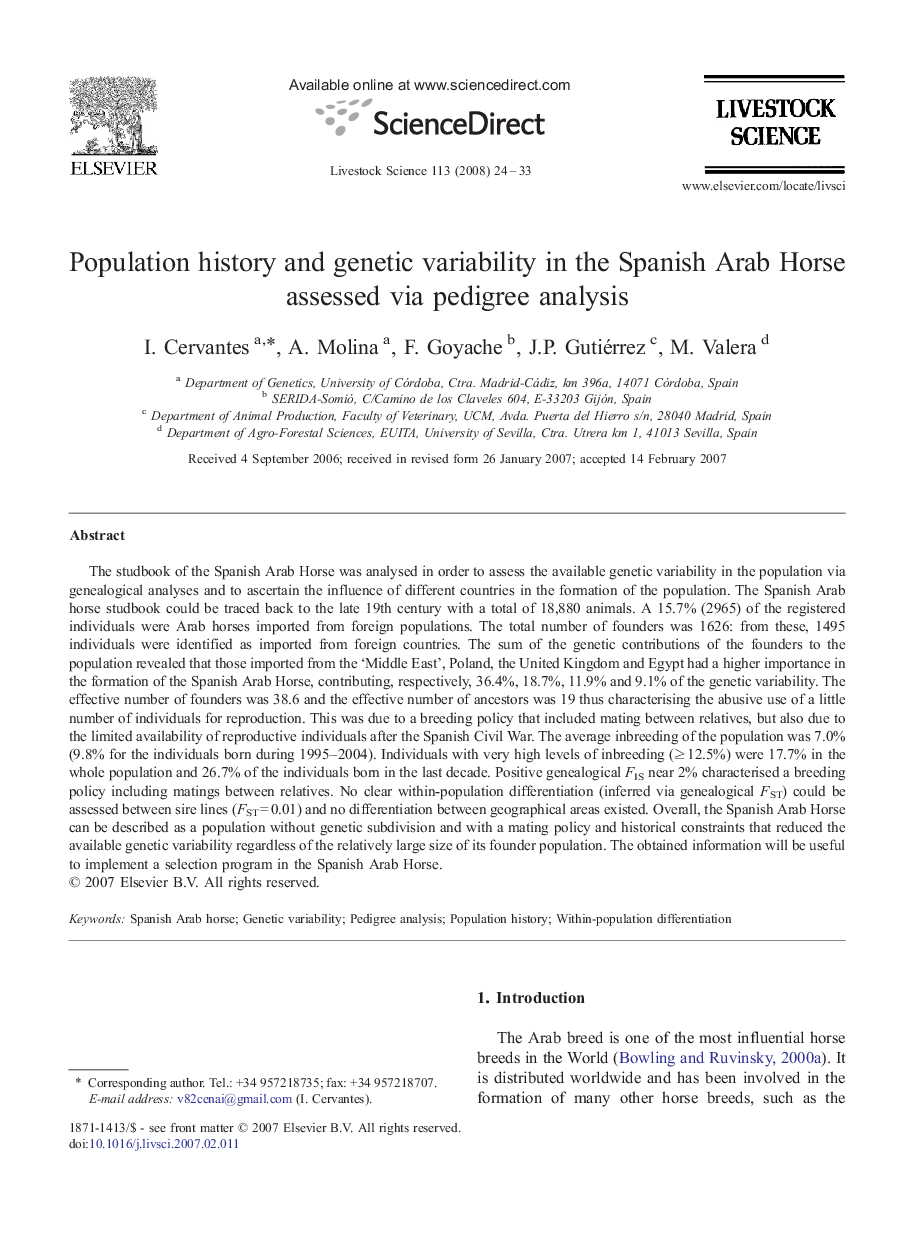| کد مقاله | کد نشریه | سال انتشار | مقاله انگلیسی | نسخه تمام متن |
|---|---|---|---|---|
| 2448377 | 1109546 | 2008 | 10 صفحه PDF | دانلود رایگان |

The studbook of the Spanish Arab Horse was analysed in order to assess the available genetic variability in the population via genealogical analyses and to ascertain the influence of different countries in the formation of the population. The Spanish Arab horse studbook could be traced back to the late 19th century with a total of 18,880 animals. A 15.7% (2965) of the registered individuals were Arab horses imported from foreign populations. The total number of founders was 1626: from these, 1495 individuals were identified as imported from foreign countries. The sum of the genetic contributions of the founders to the population revealed that those imported from the ‘Middle East’, Poland, the United Kingdom and Egypt had a higher importance in the formation of the Spanish Arab Horse, contributing, respectively, 36.4%, 18.7%, 11.9% and 9.1% of the genetic variability. The effective number of founders was 38.6 and the effective number of ancestors was 19 thus characterising the abusive use of a little number of individuals for reproduction. This was due to a breeding policy that included mating between relatives, but also due to the limited availability of reproductive individuals after the Spanish Civil War. The average inbreeding of the population was 7.0% (9.8% for the individuals born during 1995–2004). Individuals with very high levels of inbreeding (≥ 12.5%) were 17.7% in the whole population and 26.7% of the individuals born in the last decade. Positive genealogical FIS near 2% characterised a breeding policy including matings between relatives. No clear within-population differentiation (inferred via genealogical FST) could be assessed between sire lines (FST = 0.01) and no differentiation between geographical areas existed. Overall, the Spanish Arab Horse can be described as a population without genetic subdivision and with a mating policy and historical constraints that reduced the available genetic variability regardless of the relatively large size of its founder population. The obtained information will be useful to implement a selection program in the Spanish Arab Horse.
Journal: Livestock Science - Volume 113, Issue 1, January 2008, Pages 24–33